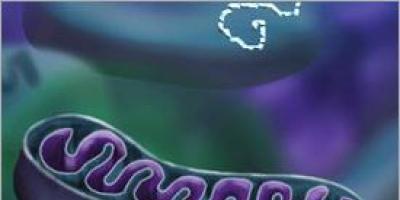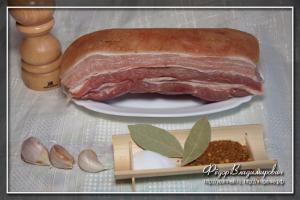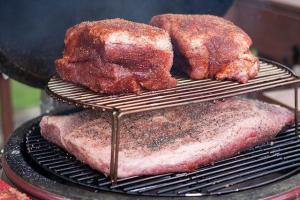The final result depends on how well the master knows how to prepare the car for painting. It will last quite a long time if everything is done correctly. However, if the rules are not followed, all the work can go down the drain. How to prepare the car for this operation so that it does not have to be redone? We will talk about this in our article today.
Many car owners believe that the preparation process is not so important, but only a minor mistake is enough to completely and hopelessly ruin the result. Painting a car on your own or in a specialized workshop takes only 10% of the time - the rest is spent on preparatory work. All its stages can be completed in 1-2 days in garage conditions. The main thing is that everything is done strictly according to technology.
Preparing the work area
Before preparing the car for painting, it is important to properly prepare the room where the car will then be painted. The main requirement is that it should be dry and warm. And of course, there should be no dust inside the room. It is worth remembering that any paint and varnish liquids are flammable. That is why in the room where you plan to paint the car yourself, there should not be any sources that could lead to a fire.
Required tools and equipment
To prepare a car for painting, you will need a certain set of equipment. machine or grinder. Also in the process, pneumatic guns will be used - with their help, liquid putty and a primer composition will be applied to the body.
To thoroughly and completely dry the body after treatment, it is recommended to use infrared emitters- this equipment will not only allow you to dry the car completely evenly, but will also help to significantly speed up this process.

Preparing a car for painting necessarily requires the use of putty, which means you need to purchase all the necessary putty and primer compounds. It would be useful abrasive wheels For grinder. Many people recommend using masking tapes, films and plasticine. And, naturally, you need a set of tools - spatulas, planes, painting knives and whetstones.
Cleaning the body surface
Any parts that may interfere with the painting process (and these are various moldings and other decorative parts, locks, any seals) must be dismantled. If this is not done, during the washing process, under these elements will accumulate a large number of moisture, as a result of which corrosion will begin and the car will rot immediately after painting.
Many people neglect this and think this action optional. But experts who know how to properly prepare a car for painting recommend doing just that - making complete dismantling all unnecessary elements.
Before driving the car into workroom, it should be washed thoroughly and wiped with a cloth. You should use a rag that does not leave lint. The dirt itself will only be removed under the influence of a strong and powerful jet.
How to inspect a car
Experts are happy to share with beginners their secrets on how to prepare your car for painting yourself. If you follow all the rules exactly, you can get good result. At the next stage of work, the car must be thoroughly examined.
The body is carefully inspected. During this process, you need to decide which parts will subsequently be repainted. Also, during the inspection, the owner will understand which elements should be leveled with putty. Next, you should decide what kind of painting will be done - partial or complete.
Paint selection
Choose suitable paint It’s simple for the entire body, but in the case of partial painting, everything is much more complicated. If the repainted part differs even slightly, it will look very rude. Therefore, many service stations have computer systems that allow you to choose the right color.

At home, using one computer cannot solve the color issue, and therefore you need to follow a different scheme. How to prepare a car for painting and choose the right color? To do this, you need to know exactly the color number applied to the body in this moment(under the hood there is a metal plate with the shade code). What else do you need to know about how to properly prepare your car for painting? Of course, the amount of materials required for this.
To make a completely 4-door sedan, you need 4 kg of primers and 6 kg of enamel. If partial touch-up is carried out, then for each square meter you will need 110 grams of enamel and 150 grams of primer.
And the most important thing that novice car enthusiasts should know about how to prepare a car for painting is that both enamels and primers must be from the same manufacturer. Otherwise, there is a risk of coating rejection.
How to protect unpainted body parts
All elements that are not planned to be painted are carefully covered. For these purposes, professionals recommend using special stencils. They are attached to the desired areas using masking tape. For places where there will be straight lines, you can use a medical plaster - this perfect solution. But often in questions of how to prepare a car for painting with your own hands, other options are practiced - a special composition is used.

Mix 20% dextrin, 30% glycerin, add 40% chalk and 10% water. After the painting procedure, this mixture is very easily washed off with plain water. The most important thing is that this drug does not get on the areas being painted.
Degreasing and sanding
The most the best remedy for this operation it is white spirit. After processing the body, all painted surfaces must be wiped dry. The next step in the task of preparing a car for painting is called abrasive treatment. This is the most difficult process. There are several sanding methods before painting. The most common are mechanical method and thermal.
Grinding Features
The mechanical method is ordinary grinding using 100 grit. A special 240 grit tool is also used for the final result.
What is the most important thing in this process? Compliance with the rules for grading abrasive values. The rule is that the grit level between the starting paper and the next paper must be at least 100. Otherwise, there is a risk of ink sagging.
Thermal cleaning
For this processing option, use blowtorch. Areas that are repainted are burned out.

The paint coating will soften as a result of heating, and it is very easy to remove it with a brush. However, this method has a drawback - if the heating is not uniform, then there is a risk of significantly compromising the integrity of metal and decorative elements. But this way you can very quickly prepare the car for painting.
Other ways to clean the body
Experts also highlight other cleaning methods - this is the use of sandblasting technology and application chemical substances. More often used to remove corrosion - cleaning is as fast and efficient as possible. The chemical cleaning method is more suitable for removing varnish on all surfaces of the body if it is in ideal condition. Solvents will do an excellent job with any paint coating.
Actions after cleaning
After grinding or any other treatment, another degreasing is performed. Then the body is wiped again with lint-free fabrics. After this, you can proceed to the next stage.
Putty
The application technology depends on the vehicle and the required task. Sometimes fiberglass or aluminum powder is additionally added to the composition. The number of layers is also determined according to the task. Apply the putty composition to the surface strictly across the dent, while leveling it.

As soon as lumps appear in the putty mixture, it is better to stop work. If the mass begins to dry out, there is no point in touching it. The putty dries on average in 15-20 minutes.
Padding
At the final stage, primer is applied to the body. These compounds will significantly improve the quality of adhesion of the paintwork and painted parts. In addition, primers protect the metal from corrosion.
The primer is carried out in three stages. The first step is phosphating. Then, using leveling primers, minor defects are removed. On last stage The primer gives the surface an ideal look.

Experts who know how to prepare a car for painting advise applying the first layer of primer in a horizontal line. Moreover, each of them should overlap the previous one by 50%. The second is applied vertically and in a thinner layer. Each of them must dry for 10 minutes. There is no need to apply more than three layers. Next, the surface should dry for 2-3 hours. Then it is sanded and degreased.
So, we found out how to prepare a car for painting with your own hands in a garage.
Hello, dear Masters, who are afraid of business!
One day, while waiting for your beloved wife near the store, you suddenly pay attention to the condition of the paintwork of your car and briefly think that it wouldn’t hurt to touch it up. After some time, the thought of needing to touch up your car comes back to you when you see your neighbor in the garage driving out in his freshly painted, and therefore seemingly new, car. And you finally decide that you need to paint your car.
Correcting body defects and cleaning it from rust
The second question is how to paint a car, partially or completely. This determines how to prepare the car for painting, i.e. what equipment is needed, how much material and, accordingly, money is needed. As a result, the decision was made, and it was made in favor of full painting. Then we begin preparing the car for painting.
Preparation for painting a car can be divided into several stages. Our example is one of many options on how to prepare a car for painting, and in no case is it a dogma or the ultimate truth. Option.
Troubleshooting. Wash the car thoroughly. Assessing the condition of the car will give you an objective answer to the question: partial or complete painting is needed. And when inspecting the car, do not try to deceive yourself or reassure yourself.
For example, if you see rusty bubbles of paintwork in the area of the sills or fender, do not regret, press on this place with a hard object. This rust came out from the inside, which means the process has gone deep. Or rather, it comes from the depths - welding may be necessary.
When preparing to paint a car, we carefully inspect risk areas: sills, underbody, fenders, pillars, joints of body parts.
Welding work . Don't hope for a miracle, and it is best to cut out the most problematic rotten areas of the body and apply patches. To do this you will need a grinder and welding machine.
Car body cleaning. First of all, using a grinder, we clean the welding seams until they are aligned with the plane of the body. Then we start cleaning with emery cloth. For this stage of preparation for painting the car, you will need a special plane and an orbital sander. And, of course, hands are where the mechanisms cannot reach.
The main purpose of sanding the body is to ensure that there are no sharp chips or drops left. In places with rust, remove it down to the metal of the body. In this procedure, a rust converter will come in handy. Deep cracks, dents, chips are treated with sandpaper p80-p120, large cracks - sandpaper p60. More information on how to remove rust from a car body is written in.



Stages of preparing a car body for painting
putty. (by the way, this word can also be pronounced as “putty”). Important stage preparation for painting a car. Before puttying, the surface needs to be “matted”; for this we use sandpaper p220-p260.
To smooth out large body defects, we use coarse-grained putty with fiberglass (another type of two-component putty with aluminum filler may also be suitable). The putty is applied to deep chips or dents in several layers. It is elastic and can withstand mechanical loads. Can also be used for plastic parts. But, as a rule, there is putty for plastics for this purpose.
To smooth out minor body defects, a two-component universal putty is used. For final finishing of some surfaces, use finishing putty. To fill microcracks, a one-component acrylic putty(applied after primer).
You choose brands and manufacturers of putties according to your discretion and preferences. It is important to strictly adhere to the manufacturer's instructions for using putties.
Grinding. Before starting, use developing powder (powdered graphite, carbon black) to determine the areas of the body where putties need to be added. Sanding is carried out using a grinder and sandpaper p80-p120.
We polish the surface with sandpaper R240-R320 and degrease the areas ready for painting. Use masking tape and paper to cover all parts and parts of the car that you do not plan to paint.
Primer. For priming, a compressor with a pressure of 3 atm is required. and soil. We start the primer from the places that were puttied. The primer is applied in several layers. Each layer must dry. The most common primers today are acrylic. They guarantee high protection body from corrosion.
After the primer, a layer of “developing” is applied, that is, spraying paint of a contrasting color.
Primer treatment for painting. If you are getting ready to paint a car acrylic paint sandpaper p400-p600; metallic – p600-p800 plus gray scotch-brite (p500 – p600).
At this stage, unevenness or depressions may appear. We return to the putty again and bring the body to ideal condition (see above).
All. You can sit down and have a smoke. The car has been prepared for painting.
Good luck, car lovers.

Almost every driver has faced the need to paint a car. That’s when the question arises, what kind of sandpaper to clean the car with before painting. This material is used at several stages of body paint restoration. Each of them uses its own type of sandpaper. This is due to the surface processing requirements, as well as the grain size. Correct selection Sanding paper will allow you to complete the job as efficiently as possible. The choice of sandpaper is one of the main points when preparing to paint your favorite car.
What sandpaper should I use to clean my car before painting? Before answering this question, figure out what exactly you are going to do with the car, as well as how much corrosion has eaten into the body. In some cases, sandpaper is not enough, then you will have to use a sander for the job. In practice, when painting, the entire line can be used sandpaper. Below we will look at the main types and methods of application.

Kinds
Grain size 60-180
This is coarse sandpaper. It is used for rough processing of the body. Most often it is used to rip off old paint. Also with such paper, if it has become sufficiently ingrained into the metal. When used to repair damage with coarse fiber putty, such sandpaper can smooth it out quite well. When using such a large abrasive material, be careful. Do not treat areas without rust. Large grains can damage the iron, causing rust.
Size 240-480
It's smaller. It can be used to finish rough, fibrous putty. Also, it is often used for the initial treatment of soft or liquid putty. After applying the primer, this paper is used to remove stains from the parts. This is the grain size most often used by car enthusiasts.
Size 600-800
Using this paper, soft putty is rubbed in immediately before applying the primer. This paper is fine enough to minimize damage to the body, while providing a fairly smooth surface.
Size 1000-1200
This sandpaper is used to treat the primer immediately before painting the body. The task is to sand the part without damaging the primer layer. Therefore, such small paper is used for this work.
Size 1500-5000

Before starting work on updating the appearance of the car, it makes sense to conduct an experiment. Wet a cloth with solvent and place it on the body. After waiting 20 minutes, look at the result. If the paint hasn't changed appearance, then you don’t have to rip it off entirely. Clean only areas damaged by corrosion. If the paint is warped, you will have to clean the entire body of it. Otherwise there will be problems with swelling of the fresh coating.
Often beginners do not know how to properly clean the body. Large volumes are usually processed with a grinder. This will help you save energy and time. If you do not have such a tool, you will have to use sandpaper. For large volumes, take a block and wrap it with suitable sandpaper. After that, use a circular motion to clean the body of paint. In areas damaged by corrosion, it is recommended to clean by hand.
Grout primer performed only by hand. With this method you can carefully sand down all the slightest irregularities. This way you can create the best quality base for applying paint. The grouting process itself is carried out using uniform circular movements.
Sand only after complete drying. Before starting work, check the degree of drying of the substance. To do this, you need to rub the sandpaper over the putty. If stuck fibers appear in the grains, it is better to wait a little longer. Sand the putty stain in a circular motion from the edge to the center. This work takes place in 2 stages. First, a rough leveling is carried out, after which it is brought to normal condition with a finer grade of abrasive.

It is extremely important to thoroughly sand the body before priming. Often, beginners pay insufficient attention to sanding before priming. Don't expect the primer to hide all your imperfections. This is not true, all the little things will be visible even more. Sand the body thoroughly with medium sandpaper. To speed up the process, use a block. It is better not to use a grinder.
Polishing must be done extremely carefully. Any mistake can ruin all the work done previously. If you are not confident in your abilities, then it is better to turn to a more experienced person. Polishing is carried out in several stages. First use a coarser sandpaper ( 2000-3000 ), after that the smallest one is applied ( 4000-5000 ). Finishing made using felt.
Conclusion. In the process of restoring the body, a beginner may wonder what kind of sandpaper to sand the car before painting. In fact, almost the entire line available for sale is used. For each operation, paper with the appropriate grain is used. This allows for a perfect paint finish.
Basic requirements for painting: a compressor providing a constant pressure of at least 2.5 atmospheres (or better 3), a normal spray gun that does not have to be expensive, most importantly of high quality, a temperature not lower than +18 and most importantly low humidity.
Before painting, you need to thoroughly degrease the surface and wipe with an antistatic cloth. Paint, if it is in several cans, must be mixed in one container in order to avoid possible differences in tone. Next, add a hardener and use a thinner to bring it to the desired viscosity (more details about painting materials in the miscellaneous section). If it is metallic, then the base does not require a hardener.
We pour the paint into the tank of the spray gun and do a test paint job on some even and smooth object. We adjust the paint supply and spray width, and then move on to the car. If the car is being painted as a whole, then I start with parts (under the hood, inside doors, doorways etc.)
When painting, do not try to cover it the first time.
Painting regular paint(single layer)
Lay the first layer in a very thin layer, the second thicker with a slight gloss. If after the second the paint does not show through, then we lay the third with filling; if after the second there are gaps, then the third is also slightly underfilled, and the fourth is already filled. In general, the point is that after the layer on which no gaps are visible, another control layer should be laid. I do this because under artificial lighting the gaps may not be visible, but under bright light sunlight they can and will appear, especially if polishing is expected.
In the two layer paints, the difference is in the laying of the base (metallic), and the varnish lays down in the same way as simple paints. The base should be laid in thin layers (do not fill). The number of layers is approximately the same as in simple paints (also with a control layer). These layers should be as uniform as possible and, if possible, without joints on one part. Uneven layers and joints are especially noticeable on light metallics, not to mention three-layer coatings (various mother-of-pearls and chameleons). Also try to do at least the last layer in one direction on parts that are in the same plane (especially for light metallics).
Once the base has become completely matte, apply the varnish. I don’t recommend leaving the base without varnish for a long time, and not only because the adhesion to the varnish will deteriorate, but also because if dust or some kind of debris settles, it will be problematic to remove it. If you wipe the base without varnish, even very carefully, then after applying the varnish, scratches and stains from the napkin will become noticeable.
In general, I advise beginners to lay more layers, maybe 5 - 6, but thin and not pour too much. Do not pour too much so that the paint does not run, but more layers so that you can safely polish off the dust.
How to prepare a car for painting?
 Hello, dear Masters, who are afraid of business!
Hello, dear Masters, who are afraid of business!
One day, while waiting for your beloved wife near the store, you suddenly pay attention to the condition of the paintwork of your car and briefly think that it wouldn’t hurt to touch it up. After some time, the thought of needing to touch up your car comes back to you when you see your neighbor in the garage driving out in his freshly painted, and therefore seemingly new, car. And you finally decide that you need to paint your car.
The second question is how to paint a car, partially or completely. This determines how to prepare the car for painting, i.e. what equipment is needed, how much material and, accordingly, money is needed. As a result, the decision was made, and it was made in favor of full painting. Then we begin preparing the car for painting.
How to prepare a car for painting: correctly and competently?
Preparation for painting a car can be divided into several stages. Our example is one of many options on how to prepare a car for painting, and in no case is it a dogma or the ultimate truth. Option.
Troubleshooting. Wash the car thoroughly. Assessing the condition of the car will give you an objective answer to the question: partial or complete painting is needed. And when inspecting the car, do not try to deceive yourself or reassure yourself.
For example, if you see rusty bubbles of paintwork in the area of the sills or fender, do not regret, press on this place with a hard object. This rust has come out from the inside, which means the process has started. Or rather, it comes from the depths - welding may be necessary.
When preparing to paint a car, we carefully inspect risk areas: sills, underbody, fenders, pillars, joints of body parts.
Welding work. Don't hope for a miracle, and it is best to cut out the most problematic rotten areas of the body and apply patches. To do this you will need a grinder and a welding machine.
Car body cleaning. First of all, using a grinder, we clean the welding seams until they are aligned with the plane of the body. Then we start cleaning with sandpaper. For this stage of preparation for painting the car, you will need a special plane and an orbital sander. And, of course, hands are where the mechanisms cannot reach.
The main purpose of sanding the body is to ensure that there are no sharp chips or drops left. In places with rust, remove it to the body. In this procedure, a rust converter will come in handy. Deep cracks, dents, chips are treated with sandpaper р80-р120, large cracks - р60
putty. (by the way, this word can also be pronounced as “putty”). An important stage in preparation for painting a car. Before puttying, the surface needs to be “matted”; for this we use sandpaper p220-p260.
To smooth out large body defects, we use coarse-grained putty with fiberglass (another type of two-component putty with aluminum filler may also be suitable). applied to deep chips or dents in several layers. It is elastic and can withstand mechanical loads. Can also be used for plastic parts. But, as a rule, there is putty for plastics for this purpose.
To smooth out minor body defects, universal putty is used. To finalize some, use finishing putty. To fill microcracks, a one-component putty is used (applied after priming).
You choose brands and manufacturers of putties according to your discretion and preferences. It is important to strictly adhere to the manufacturer's instructions for using putties.
Grinding. Before starting, use developing powder (powdered graphite, carbon black) to determine the areas of the body where putties need to be added. Sanding is carried out using a grinder and sandpaper p80-p120.
We polish the surface with sandpaper R240-R320 and degrease the areas ready for painting. Use masking tape and paper to cover all parts and parts of the car that you do not plan to paint.
Primer. A compressor with a pressure of 3 atm is required. and soil. We start the primer from the places that were puttied. The primer is applied in several layers. Each layer must dry. The most common primers today are acrylic. They guarantee high body protection against corrosion.
After the primer, a layer of “developing” is applied, that is, spraying paint of a contrasting color.
Primer treatment for painting. If we are preparing to paint a car with acrylic paint, sand paper p400-p600; metallic – p600-p800 plus gray scotch-brite (p500 – p600).
At this stage, unevenness or depressions may appear. We return to the putty again and bring the body to ideal condition (see above).
All. You can sit down and have a smoke. The car has been prepared for painting.
Good luck, car lovers.
How to rub putty - sandpaper, a block and a little patience
Approaching the issue of how to rub putty it is necessary with all seriousness. The final layer of this finishing material must be perfectly flat and smooth - especially if the surfaces are being prepared for painting.
How to sand putty? ?
You can level the surface of a putty wall manually or using special grinding machines. The first method, of course, is preferable, since it allows you to remove flaws even in the most hard to reach places, and the quality of work when using it will be higher. Apply machine method experienced craftsmen recommended only if the area is very large. However, without self made This is also not possible; in some places the master will still have to “go through” the sandpaper.
The main advantages of the machine processing method are high speed of work and convenience, because thanks to the long handle you can “reach” to the ceiling. However, it should be noted once again that it will not be possible to achieve manual work using a mechanized method. In addition, such units cost at least forty thousand rubles, so there is no point in buying them to repair one house or apartment.
What kind of sandpaper should be used for putty? ?
So, let's focus on the manual method of rubbing putty. Typically, sandpaper or sanding mesh is used for this. It is best to choose a sandpaper that contains fabric rather than paper, since it is more wear-resistant. In order to save money, it is worth buying sandpaper in rolls, because this material will have a high sanding time. Along with the abrasive, you need to purchase a block on which it will be attached.
The grain size of the abrasive is also of great importance. When buying sandpaper, you need to pay attention to its markings. If we are talking about imported material, then it will be marked with the letter “P” and a number from 24 to 600. The lower the number, the larger size grain, which means the work will be rougher. As a rule, paper with the following designations is used for sanding putty:
- P60;
- P80;
- P100.
Domestic sandpaper is designated by numbers from 4 to 80 with the prefix N. For example, 8-N or 25-N. Moreover, unlike its foreign counterpart, increasing the number also increases the graininess of the paper. The marking of the finest sandpaper - the so-called “zero” - is slightly different and is designated as M 40.
Sandpaper, used to make putty smooth, has one significant drawback - it quickly becomes clogged with dust and has to be changed quite often. Therefore, experts advise using a sanding mesh instead. It costs a little more, but this is fully justified by the lower consumption. The markings of this material are exactly the same as those of imported sandpaper.
Grouting putty - let's get to work?
Before starting work, you need to protect adjacent rooms from dust by covering the doorways with a wet cloth. In addition, you need to take care of yourself - wear a suit made of thick material, gloves, goggles and a respirator that fits tightly to your face.
Sanding should be done before applying the final coat of primer.
Let's finally look at all the grinding methods, as well as their pros and obvious cons.
To begin with, you need to decide what you have wet and dry sanding.
Wet sanding is sanding with water using special “wet” sandpapers (abrasive paper intended for use with water).
The abrasive grain of this paper does not crumble when in contact with water, and it does not get wet. When using this sanding paper without water, it quickly clogs the abrasive with particles of the surface being treated (paint, putty, etc.).
Dry is sanding without the use of water, or as they also say “dry”... They use, as you probably already guessed, special abrasive paper for dry sanding. When used with water, the abrasive grain discolors, it becomes soggy and becomes unsuitable for further use.

So, we already know that for each type of sanding, be it dry or wet method Appropriate abrasive paper (sandpaper) must be used. This means that using an inappropriate grinding method is not permissible (you simply will not achieve the desired effect and will throw money away).
What is the difference between dry and wet sanding when preparing a car for painting?
Of course, in addition to the use of special paper, they also differ in some nuances. For example, the grain size of the abrasive, which on modern papers is marked with an alphanumeric code.
For example:
P80 - very coarse abrasive.
P500 – smaller.
P1500 – very fine abrasive.
Despite this, the range of abrasives used for polishing car paintwork is much wider.
As far as I know, abrasives from P60 before P4000 .
So, the dependence of the abrasive grain size for wet and dry grinding differs by approximately two times.
Let me explain with an example:
If you are wet sanding primer for painting, you should use wet sanding paper with an abrasive grain size of approximately P800-P1000.
If you work dry, then the number of sanding paper is approximately halved, that is, you should use paper with abrasive P320-P500
Now, we should consider all the pros and cons of these grinding methods.
Wet– Well, there’s actually only one plus here – the absence of dust. But there is a whole garland of minuses!
- If you are grinding putty and there is “bare” iron underneath, then corrosion of the metal is guaranteed in the future. Because the putty has the poor property of being hygroscopic and absorbs and, accordingly, passes moisture through itself like a sponge.
- It is not possible to use an orbital sander.
- The result is not very high-quality surface treatment.
Dry – This method is used by almost all advanced paint shop masters.
Despite its one main drawback - a large amount of dust from the workpiece, it can be successfully combated by using vacuum cleaners, as well as dust masks on the face.
The most significant advantage is the possibility of using an orbital sander, which provides excellent quality of the treated surface.
Advanced car repair shops have been using it for a long time. combined designs vacuum cleaners and sanders, but of course for our brother this is a little expensive, so best solution This problem is either working in the fresh air, blown by winds or using protective dust masks.

Now we can summarize.
It is not recommended to use wet grinding on putty when there is “bare” (not primed) iron underneath it. Wet sanding is very appropriate when erasing “snot” (drips) and other defects on varnish and paint, as well as in some cases when sanding varnish for polishing.
In other cases, I personally prefer dry sanding.
But it’s up to you to decide what to use.
Good luck in your hard work!








